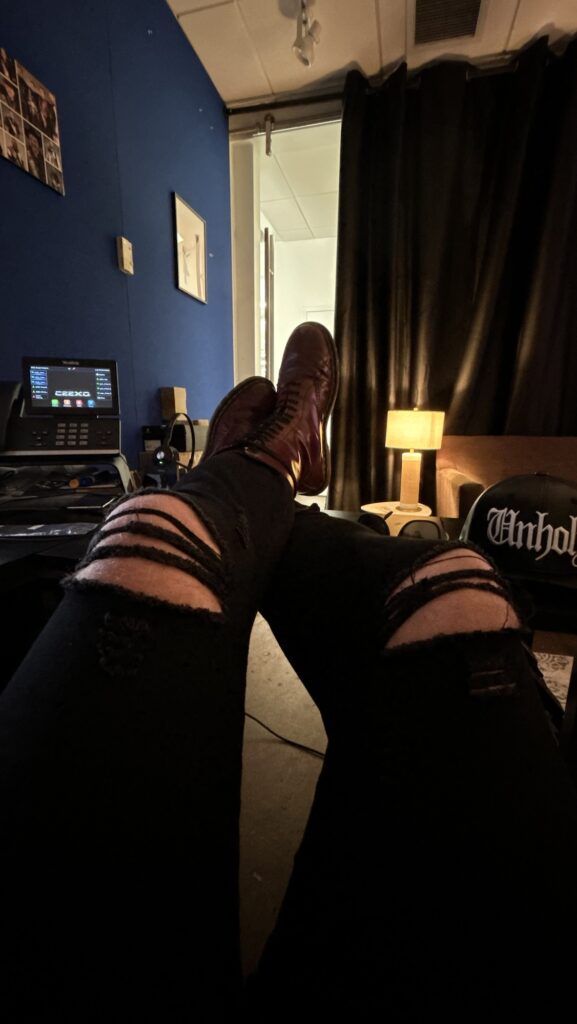When you hear the word skinhead or punk, chances are your mind jumps to all the wrong images: swastikas, white laces, hate rallies. And with good fucking reason But that isn’t the full picture—never was. The skinhead and punk scene was born in working-class multiculturalism, not fascism. And for many of us, especially queer people, SHARP skinhead and punk culture offered something rare: a place to fight back and belong.
Roots of the Skinhead & Punk Movements
The original skinhead subculture emerged in late 1960s Britain. It was a fusion of mod fashion, Jamaican rude boy culture, and working-class pride. Skinheads weren’t political at first, but their look—buzzcuts, boots, braces—became iconic. They bonded over music like ska, reggae, and later, Oi! punk.
The myth that all skinheads are fascists? That came later, when far-right groups deliberately infiltrated the scene. But anti-racist and left-wing skinheads never left. SHARP (Skinheads Against Racial Prejudice), founded in the late 1980s, pushed back hard, reclaiming the subculture’s roots.
Much like Skinheads Punk originated in both the United States and the United Kingdom, with close ties to music scenes in cities like New York and London, where bands such as The Ramones, Sex Pistols, and The Clash became early icons.
The movement was characterized by its raw, aggressive sound, DIY ethos, and distinct visual style—featuring ripped clothing, safety pins, and bold hairstyles.
Beyond music, punk became a broader subculture that embraced anti-establishment attitudes, anarchism, and individual freedom, influencing art, fashion, and literature. Over time, punk splintered into numerous subgenres and scenes, yet it has remained a powerful symbol of resistance and identity for generations.
SHARP: Reclaiming the Boots

SHARP—Skinheads Against Racial Prejudice—rose in the late 1980s as a direct response to the far-right hijacking of skinhead style and culture. It wasn’t just a political movement; it was a cultural reclamation. SHARP skinheads weren’t just anti-racist—they were reclaiming a tradition built on solidarity, Jamaican ska, and working-class pride.
SHARP wasn’t about fashion for fashion’s sake.
The boots, the braces, the buzzcuts—they were symbols of resistance, identity, and history. For queer folks, especially, that symbolism became even more layered. Dressing like a skinhead as a queer person was (and still is) a radical act.
Today, SHARP has welcomed their punk siblings into their ranks and has started to create a unified front against hate.
Queer + Skinhead/Punk Unity = Revolutionary



It might seem like a contradiction: the hypermasculine, working-class image of the skinhead/punk world and the fluid, rebellious energy of queer identity. But it’s not. It’s power. It’s tension. And it’s transformation.
Queer SHARPs have always existed, even if they’ve often been overlooked in both queer and skinhead/punk narratives. Being queer and being a skinhead aren’t at odds. They’re both about survival. About reclaiming space. About fighting fascists—both literal and cultural.
Being queer in SHARP means showing up in spaces that don’t always expect us. It means pushing back against homophobia in punk scenes and pushing back against the idea that queerness must be soft, sanitized, or corporate-friendly. It means being visible in places where people don’t expect you to exist—and staying anyway.
Resistance Is in the Details

There’s something subversive about lacing up your fucking boots, polishing them till they shine, shaving your head, and walking through the world queer as hell. It’s a statement before you say a word. In SHARP culture, those details matter. White laces mean white power; red means anti-fascist (or fisting in the fetish world). For queer SHARP skinheads, style isn’t just fashion—it’s politics. It’s armor. It’s very, and I do mean, very fucking important.
Zines, pins, patches, mixtapes, and DIY shows have kept this culture alive and loud. From queer skinhead meetups to SHARP-led punk gigs with zero tolerance for hate, the underground still thrives—online and off.
This is NEVER about violence, and in fact it’s about the opposite. It’s about standing as an example of unity.
Unity, Not Uniformity



What queer SHARP skinheads and punks prove is that solidarity doesn’t require sameness. You don’t have to fit the mold to stand your ground. SHARP is about unity, not uniformity. It’s about smashing fascism, rejecting racism, and creating a punk space that isn’t just for the loudest, straightest, or whitest voices.
We are queer. We are SHARP. We are anti-racist, anti-fascist, anti-capitalist—and damn proud of it.

Lately, I’ve been lacing up my vintage ’80s cherry Docs—a gift from a mountain-of-a-man and founding member of the queer SHARP movement. He told me these boots were already scuffed, broken-in, and worn through thousands of miles of protest, pride, and persistence. They’re more than shoes—they’re wearable history.
My boots are loud and proud. People stare, and I fucking love it. I want them to look. I want to be that weirdo who looks unhinged but helps old ladies carry their shopping bags across the street. A little chaos, a lot of kindness.
In today’s climate, wearing them feels like armor. A reminder of those who came before me, of queer pride, of how far we’ve come—and how much we still stand to lose.
So whether you’re waving a rainbow flag or rocking a Fred Perry with pride, remember: the fight is intersectional. The boots are made for marching. And the movement? It’s big enough for all of us.


